Roel Reine’s first film The Delivery earned him the Golden Calf award, regarded as the Dutch counterpart to the Academy Awards for Best Director. Mr Reine has also directed the Steven Seagal film Pistol Whipped, as well as the The Marine 2 for WWE productions. Recently he has just wrapped shooting on Death Race 2.
JASON: What films inspired you to pursue a career in the film industry?
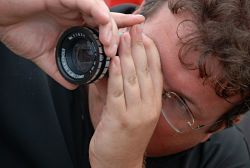 ROEL: When I first saw Star Wars and Blade Runner I immediately knew I wanted to make movies. I grew up watching a lot of American films, especially in Holland where the cinemas are full of American movies. I was brought up on James Bond films, and then in the eighties I was drawn to these big action movies, with the likes of Schwarzenegger and such. I loved that stuff, I’m also a big fan of Luc Besson’s early work, and I loved The Professional and The Big Blue. I started making films at a very young age. I was around eight and I made a couple of stop-motion animation films, with my father’s 8mm camera. When I was younger my parents wouldn’t allow me to go to film school. They wanted me to get an education so I could get a ‘real’ job first. So I went to a school where they instructed us to be history teachers. After that I went to a university and studied film and communication. That’s how it all started.
ROEL: When I first saw Star Wars and Blade Runner I immediately knew I wanted to make movies. I grew up watching a lot of American films, especially in Holland where the cinemas are full of American movies. I was brought up on James Bond films, and then in the eighties I was drawn to these big action movies, with the likes of Schwarzenegger and such. I loved that stuff, I’m also a big fan of Luc Besson’s early work, and I loved The Professional and The Big Blue. I started making films at a very young age. I was around eight and I made a couple of stop-motion animation films, with my father’s 8mm camera. When I was younger my parents wouldn’t allow me to go to film school. They wanted me to get an education so I could get a ‘real’ job first. So I went to a school where they instructed us to be history teachers. After that I went to a university and studied film and communication. That’s how it all started.
J: How did this lead to your big break into the industry?
R: I started making music videos in my teens and then when I was 23 I directed my first action television series back in Holland. I was very young and forced to learn my craft by just doing it. For years I directed reality shows and sitcoms, I even did the Dutch version of Friends. Anything that involved filming, I did it. During this time I was doing my own short films, but not a feature. Shooting a feature film in Holland is very difficult. If you want funding it’s subsidized by the government, however the film being made must have some sort of ‘Dutch’ artistic value. And I wanted to make action films. So my first picture in Holland was privately financed. I put a second mortgage on my home and I pulled a lot of favors from friends I had met in the T.V. world. In the end I was able to come up with a budget of $350,000 to make my first movie which was titled The Delivery. We shot it on film and it has some big action scenes in it. It was picked up by Warner Bros for a European release, and then Lionsgate brought it to the states. I won awards for the film including the Golden Calf for Best Director, which is sort of like the Oscars in Holland.
J: Did the success of The Delivery make it easier to get other projects off the ground?
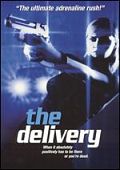 R: The movie was a success outside of Holland we did big business in Belgium, America and France. But back home people didn’t like it; the response was “This is a Dutch guy trying to make an ‘American’ movie”. Ironically people in Holland were saying I wanted to make American films, and people in the USA were saying “This is a nice European movie”! So I was stuck in the middle, the types of movies I wanted to do, Sci-Fi and Action nobody believed in back home. So in the end I knew I had to come to America to make the films I really love. It took me a few years to make that decision because it was a big step.
R: The movie was a success outside of Holland we did big business in Belgium, America and France. But back home people didn’t like it; the response was “This is a Dutch guy trying to make an ‘American’ movie”. Ironically people in Holland were saying I wanted to make American films, and people in the USA were saying “This is a nice European movie”! So I was stuck in the middle, the types of movies I wanted to do, Sci-Fi and Action nobody believed in back home. So in the end I knew I had to come to America to make the films I really love. It took me a few years to make that decision because it was a big step.
J: Was it a difficult transition from Holland to Hollywood?
R: I had to start all over again. Everything I had done in Holland didn’t mean anything here. At that time I had a taken a few meetings around town, but nobody would give me money to make a film. My options were either go back home, or start making really low-budget films here. Needless to say I chose the latter. I ended up shooting a feature Drifter in the desert for $40,000. Then we did another low-budget picture called Deadwater with Lance Hendrickson. Those films opened up the opportunity for me to get meetings with the executives who control the money; I call it the ‘illusion of success’. I could tell people I’m a competent filmmaker, but if you show them a polished product they are more likely to believe in you. That’s what happened; those two movies turned out to be pretty good. Then Sony offered me a Steven Seagal movie, and I really had to think about it because I’m also a big fan of Seagal’s older films from the 80’s and 90’s. However in the last 6-7 years his films haven’t been that good. I thought if I take on this project, I want it to be a good movie foremost. It also was a way for me to get in the system and show I can work with American stars. So I said yes and that’s how Pistol Whipped came about.
J: How was your experience working with an action icon like Steven Seagal?
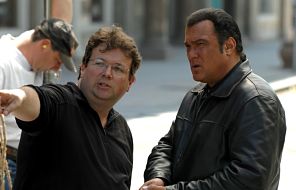 R: I was kind of nervous at first. But when I met him he made me feel comfortable right away. He’s really focused in what he wants to do and we talked about his recent movies. I told him “If we are going to do this. I would really like you to do everything yourself.” I didn’t want to use doubles of him getting out of a car or more importantly the fight scenes, basically all the types of things I saw in his last few movies. I remember when I told him that, it created a kind of respect between us. Steven responded by saying he was willing to do this stuff and he really liked the script, plus he had seen some of my earlier work and had been a fan of The Delivery. Something connected between the two of us, so I could convince him to do the things that were needed. I’m a different style director, I DP myself as well as operating the camera. I have a really fast way of working. On the set it became so fluid there were no problems. So by the time he arrived on the set I was ready to go, we were prepared to shoot from any angles. All of this created a good working chemistry.
R: I was kind of nervous at first. But when I met him he made me feel comfortable right away. He’s really focused in what he wants to do and we talked about his recent movies. I told him “If we are going to do this. I would really like you to do everything yourself.” I didn’t want to use doubles of him getting out of a car or more importantly the fight scenes, basically all the types of things I saw in his last few movies. I remember when I told him that, it created a kind of respect between us. Steven responded by saying he was willing to do this stuff and he really liked the script, plus he had seen some of my earlier work and had been a fan of The Delivery. Something connected between the two of us, so I could convince him to do the things that were needed. I’m a different style director, I DP myself as well as operating the camera. I have a really fast way of working. On the set it became so fluid there were no problems. So by the time he arrived on the set I was ready to go, we were prepared to shoot from any angles. All of this created a good working chemistry.
J: Your next film was The Marine 2 starring Ted Dibaise Jr. How did you get involved with WWE productions and this project?
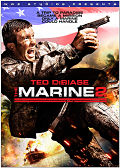 R: I had met with WWE heads awhile back and they had really loved Pistol Whipped. They were very impressed with what I had done with Seagal. Even more they were excited about the action that was done for a very low budget. I shot Pistol Whipped in eighteen days. They had asked me to do a film for them titled Behind Enemy Lines: Columbia but I was not available at the time. We were still on location with a picture I did called The Last Tribe. When I returned from Panama, they approached me to direct The Marine 2. I read the script and I thought it was pretty interesting, so I said yes.
R: I had met with WWE heads awhile back and they had really loved Pistol Whipped. They were very impressed with what I had done with Seagal. Even more they were excited about the action that was done for a very low budget. I shot Pistol Whipped in eighteen days. They had asked me to do a film for them titled Behind Enemy Lines: Columbia but I was not available at the time. We were still on location with a picture I did called The Last Tribe. When I returned from Panama, they approached me to direct The Marine 2. I read the script and I thought it was pretty interesting, so I said yes.
J: On the behind the scenes featurette for The Marine 2 there is a clip of you playing atmosphere music on-set to get the actors ‘in the moment’. Is this a common practice on your shoots?
R: I always do that. For me music is a very important part of my creative force. When I read a script I listen to music, during the initial preparation for a film I’ll make a CD that serves as kind of a inspiration. I give this CD to the actors, art directors or anybody that has creative input on the project. I use different tracks for individual scenes that have an underlying emotion. I’ve done this since my first film, although I did not do that with Steven Seagal. Music is such a simple tool to direct emotion, it’s quite effective. It’s also important to get a rhythm; sometime when I operate the camera I have music in my ears. It just gives the proceedings an extra dimension. On The Marine 2 I was nervous about the hostage scenes because we used tourist as extras. We had our principle actors in the same scene as people on vacation in Thailand. It was very nerve-raking to have twenty hostages and have them all on the same emotional level. So I played a piece of music by Lisa Gerard titled the Spirit really loud on the set. I had that song on repeat mode all day and the actors and extras were emotionally drained and sobbing, so I feel that it helped everybody get to an emotional place; it drove the crew nuts though.
J: There is a great opening sequence in that film, involving two children pointing guns at each other. Was this scene written in the script?
R: That was not in the script. It was written that one child was playing and we pan up to the rooftops. I thought this is The Marine so the first shot should be of a gun. I came up with the idea of the slow-motion over the gun into the water, and then the child picks up the gun points it at another kid and pulls the trigger revealing it’s a water pistol. I love adding that little kind of stuff.
J: There are a lot of practical special effects in The Marine 2. How many of the effects were digital?
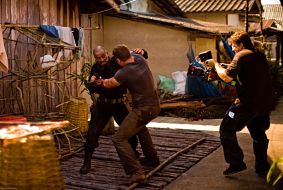 R: It was about a fifty/fifty mix between practical and digital effects. Obviously you can’t have kids around explosions, so the majority of those were digital. Also because we were working on a low budget, and I like to have more than one camera rolling at the same time during the action scenes, we would have to remove cameramen as they would get into each other’s shots. So there are a lot of digital effects that you didn’t even realize were there, like the final boat explosion at the end of the movie. That huge explosion was real, but the boat itself was moved away from the town. Then we put the dock and town back in digitally. The explosion would have been too big to have kept the boat where it was.
R: It was about a fifty/fifty mix between practical and digital effects. Obviously you can’t have kids around explosions, so the majority of those were digital. Also because we were working on a low budget, and I like to have more than one camera rolling at the same time during the action scenes, we would have to remove cameramen as they would get into each other’s shots. So there are a lot of digital effects that you didn’t even realize were there, like the final boat explosion at the end of the movie. That huge explosion was real, but the boat itself was moved away from the town. Then we put the dock and town back in digitally. The explosion would have been too big to have kept the boat where it was.
J: You’ve filmed in many different countries on several continents. Have you run into problems shooting internationally?
R: I don’t see problems so much as ways to fix new obstacles. I like shooting in these different and sometimes strange locations because it gives a lot of production value to the film. I also love people; we try to use locals on all of our shoots. In Thailand I had a complete Thai crew. You’re able to get the best of the best and it in turn inspires me. I just completed Principle photography on Death Race 2 which we shot in South Africa, and I’ve never once had a problem filming in these different countries.
J: When watching you films the viewer can’t help but notice the constant camera movement. Is this a conscious decision in production?
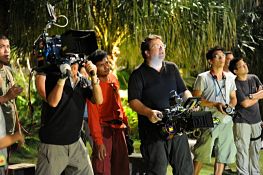 R: Absolutely, I’m always moving the camera. If I call for the sticks (tripod) to set up a static shot the crew wants to take a picture; it’s that rare of an occurrence. It’s a movie it needs to move. It has to have an emotional feeling and if the camera is still it doesn’t feel like a visually attractive moment. I just love the power of a moving camera. It’s like a dance between the actors, the camera and the action. If it’s still I start to get bored. I think this is why I operate the camera myself. I just want to be in the moment, or ‘in the movie’. Honestly I’ve never done it any other way, I wouldn’t even know how.
R: Absolutely, I’m always moving the camera. If I call for the sticks (tripod) to set up a static shot the crew wants to take a picture; it’s that rare of an occurrence. It’s a movie it needs to move. It has to have an emotional feeling and if the camera is still it doesn’t feel like a visually attractive moment. I just love the power of a moving camera. It’s like a dance between the actors, the camera and the action. If it’s still I start to get bored. I think this is why I operate the camera myself. I just want to be in the moment, or ‘in the movie’. Honestly I’ve never done it any other way, I wouldn’t even know how.
J: Can you tell us anything about your next film Death Race 2?
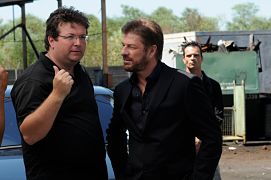 R: It’s complicated. At this time I can’t say much other than it’s going to be really good. I saw the original in the cinema and I was a fan. It had the feeling of Mad Max it was like a throwback to the action movies of the 80’s. A year ago I read in the trades magazines that Universal was making a sequel and I thought, man I’d love to do that picture. Then about 6 months ago my agent called me and asked if I wanted to read the script. I was extremely surprised and excited about it because the writing was so good, it’s a great prequel. It’s the story of the origins of the Death Race and the birth of the Frankenstein character.
R: It’s complicated. At this time I can’t say much other than it’s going to be really good. I saw the original in the cinema and I was a fan. It had the feeling of Mad Max it was like a throwback to the action movies of the 80’s. A year ago I read in the trades magazines that Universal was making a sequel and I thought, man I’d love to do that picture. Then about 6 months ago my agent called me and asked if I wanted to read the script. I was extremely surprised and excited about it because the writing was so good, it’s a great prequel. It’s the story of the origins of the Death Race and the birth of the Frankenstein character.
J: Any future projects or appearances fans can look out for?
R: How much time do you have? (Laughs). There is a lot I’m passionate about. I’m developing some small and big films, one of which is an independently financed action film that I’ll shoot in Detroit sometime this summer. I also really want to do a science fiction film, I love that genre; but I don’t know what I’ll do next. There are a few projects flying around me and I’ll do the first one that has a good script and cast. I would like to start shooting something soon. The thing is I just really enjoy being on set shooting; I’m addicted to it. That’s why I try to do two films a year, but it can be pretty demanding on my body especially when operating these heavy cameras.

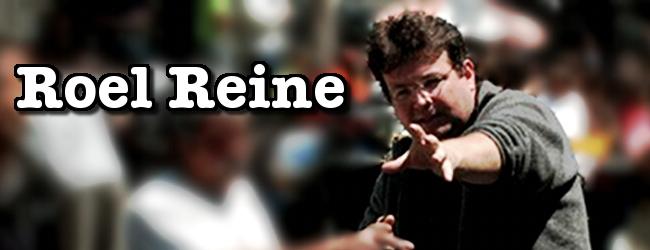
great post as usual!